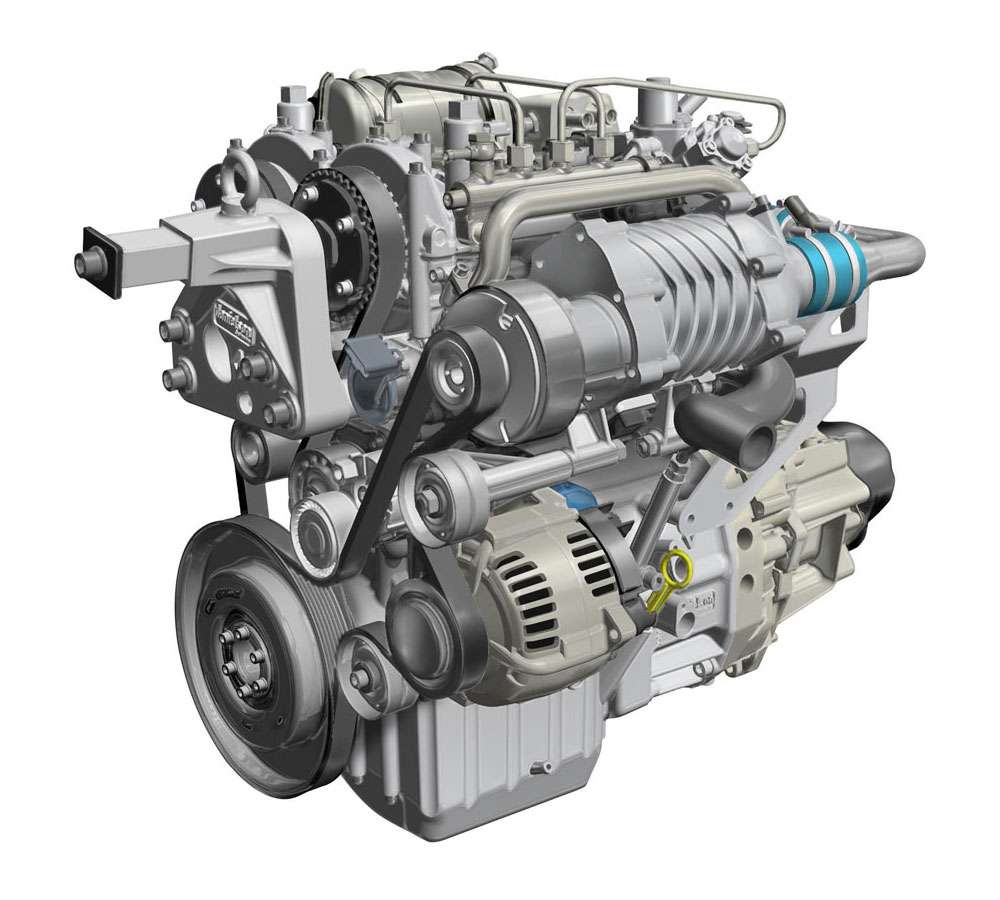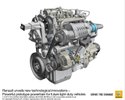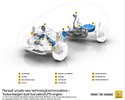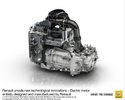
O propulsor experimental, chamado "Powerful", é um motor diesel dois tempos, que possui dois cilindros, 730 cm³ de cilindrada, sobrealimentado por turbocompressor e supercharger. Este motor produz de 47 a 67 CV de potência e de 11 a 15 kgfm de torque.
Este motor é 40 kg mais leve que o atual motor 1.5 a diesel usado pela Renault. A marca está trabalhando com dezoito parceiras na Europa para tentar tornar o sonho do propulsor "Powerful" realidade.
A Renault ainda revelou outros projetos, como um sistema híbrido para motores diesel em veículos comerciais leves, e um trailer para o Twizy, para transporte de objetos em curtas distâncias.
RENAULT LIFTS THE LID ON FUTURE MOBILITY IDEAS
New Renault compact electric motor to improve EV efficiency
Small petrol/LPG turbo engine to lower fuel bills by 25 per cent
Innovations for urban deliveries and electrification
'HYDIVU' prototype: Mild-Diesel Hybrid for LCVs
'POWERFUL' prototype: two-stroke, two-cylinder super-charged and turbo-charged diesel engine
'VELUD' prototype: Twizy-based electric urban delivery solution
Renault's innovations 'think tank' reveals what is coming in the next few years
Production starts within 12 months for some innovations
Renault today lifted the lid on two innovations based on its EOLAB prototype, both of which are scheduled to appear in production cars in 2015. At the same time the innovative French company has revealed three longer-term approaches to low-fuel consumption, low-emissions mobility.
All were unveiled at an Innovations@Renault event in Paris, where the company's Co-operative Innovations Laboratory (LCI) – a think tank that unites engineers, designers and customer survey specialists – gave a behind-the-scenes peek into how Renault powertrains and propulsion systems might evolve in the next few years.
Renault has developed a new, more efficient and more compact electric motor and a new turbocharged petrol engine adapted for use with LPG (liquified petroleum gas), both of which are scheduled for introduction next year. Looking further ahead, Renault and its partners are looking at a mild hybrid diesel prototype (HYDIVU project), a diminutive two-stroke diesel engine (POWERFUL project) and a small electric delivery vehicle based on the Twizy (VELUD project) as the basis for clean, low-cost urban mobility.
Production-ready power units
New, compact electric motor
The new, compact electric motor – designed and made entirely by Renault – delivers similar performance to those in use today but is around 10 per cent smaller. It is a synchronous unit with a wound rotor and delivers 65 kW (88hp) and 220 Nm of torque. It was designed by Renault's motor engineers in France and manufactured in Renault's Cléon plant.
Renault has switched from macro-module stacking to fully integrated modules, assembled closely so that no external power supply cables are necessary. The junction box and integrated Chameleon charger (as fitted to ZOE) are contained within a single Power Electronic Controller, which is 25 per cent smaller than existing systems.
The motor is now air-cooled, simplifying the system with only the Power Electronic Controller continuing to be cooled by water. Improved electronic management reduces charging times using the 3kW and 11kW flexi-cable, while a redesigned inverter improves efficiency and reducing power consumption.
Dual-fuel petrol/LPG engine
Renault's new dual-fuel petrol/LPG engine promises 25 per cent lower fuel bills and 10 per cent lower CO2 emissions than a comparable petrol-only power unit. It is a three-cylinder engine featuring a turbocharger, engine Stop&Start, brake energy recovery and an eco-mode, and it complies with EU6 emissions regulations. These modern technologies realise a fuel consumption reduction of 20 per cent compared to a previous-generation LPG engine. The technical challenge was to achieve the right balance between turbo boost and LPG pressure while allowing maximum use in LPG mode with no input from the driver. The entire powertrain is fitted at the factory complete with its LPG kit.
Research Prototypes
'HYDIVU' – Mild-Hybrid diesel
The 'HYDIVU' (Hybrid Diesel for LCVs) research prototype aims to reduce fuel consumption and therefore running costs for high-mileage business users. It is based on the Master van powered by Renault's ENERGY dCi 165 Twin Turbo diesel engine, and has been engineered in conjunction with a number of European partners.
It integrates a 48-volt (10-12 kW) starter motor and alternator-type electric motor mounted on the gearbox to deliver additional torque and reduce the load on the combustion engine. Its positioning, as close as possible to the wheel, promotes greater efficiency by allowing maximum recovery of energy during deceleration and braking. This 'free energy' is stored in the 48-volt battery to be used as extra torque on demand.
The power unit also features what Renault calls 'Downspeeding' – longer gear ratios which reduce engine revolutions when cruising to lower fuel consumption – while the twin turbos with variable geometry have been specially adapted to this concept. Significant levels of torque are available from just 1,000 rpm, and driveability is consistent across the entire rev band. Internal friction has been reduced through innovations like the steel pistons, and fuel injection pressure has been raised by 25 per cent to 2,500 bar to reduce emissions.
These three technologies result in a fuel consumption reduction of up to 10 percent over long distances.
'POWERFUL' – two-stroke, two-cylinder super-charged and turbo-charged diesel engine
Two-stroke diesel engines are commonplace in large container ships. Their thermal efficiency is around 50 per cent while four-stroke diesels struggle to reach 35 per cent. The difficulty, until now, has been in adapting two-stroke technology for an engine small enough for automotive use, which Renault is aiming to solve with its 'POWERFUL' (POWERtrain for Future Light-duty vehicles) project.
The two-cylinder engine is only half the size of Renault's 1.5-litre dCi diesel, weighs 40 kg less, ideally suited for small vehicle platforms. This 730cc unit is both super-charged and turbo-charged and produces between 35kW and 50kW (48hp-68hp) with 112-145Nm of torque from 1,500rpm.
Initial tests are encouraging, although the performance needs to be improved before Renault could consider introducing it. The engine is being developed with 18 industrial, scientific and academic partners in France, Spain and the Czech Republic, with investment from the European Union.
'VELUD' (Electric Vehicle for Sustainable Urban Logistics) project
With urban deliveries in mind, Renault has produced its 'VELUD' (Electric Vehicle for Sustainable Urban Logistics) project, based on the Twizy, in conjunction with a number of academic and civic partners. It is intended as a 'final miles' solution to take cargo loaded into a small trailer from pre-defined zones to their final delivery point using intelligent fleet management.
All these projects are the work of LCI, a group within Renault which has been given the freedom to step outside the framework of conventional product programmes and come up with completely original mobility solutions. The Twizy, Renault's NEXT TWO autonomous connected vehicle prototype and EOLAB are just some of the solutions already created by LCI.






Postar um comentário